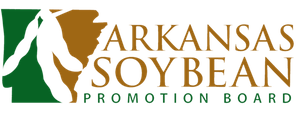Battling Redbanded Stink Bugs
Heading into the 2017 soybean-growing season, Dr. Gus Lorenz, extension entomologist with the University of Arkansas’s Division of Agriculture, sensed problems on the horizon for Arkansas producers, thanks to a mild winter.
Although he had a feeling the Redbanded Stink Bug could be an issue, he did not expect the amount of destruction soybean growers throughout the state would experience. Supported by the Arkansas Soybean Promotion Board through the investment of soybean checkoff funds, Lorenz and his team went on the offensive, determined to find answers that would lead to results.
Prior to the 2017 growing season, the Redbanded Stink Bug made an appearance in Arkansas soybean fields in 2011 and 2012, but had a hard time making a comeback in the years that followed. However, the two mild winters before producers started planting in 2017 created the perfect climate for the destructive pest to return.
When Lorenz and his team conducted ditch bank surveys, sweeping crimson clover, a cover crop Redbanded Stink Bugs are attracted to, they discovered the pest was back. However, a near-disappearance of the stink bug following the burn down of the crimson clover and advancement into the summer, caused Lorenz to think they overestimated the potential of this pest.
It wasn’t until the soybean pods began developing that Lorenz discovered the Redbanded Stink Bugs had found their way back into the soybean fields. The discovery, in addition to the reports coming out of Mississippi led Lorenz and his counterparts at Louisiana State University and Mississippi State University to lead an emergency symposium via YouTube in Stoneville, Mississippi.
Unlike stink bugs native to Arkansas, the Redbanded Stink Bug’s reproduction potential resulted in a quick return to soybean fields, making it hard for growers to get ahead of the pest. Lorenz said on average, about three applications of an insecticide were used on the Redbanded Stink Bug alone.
Dr. Nick Bateman, an extension entomologist who had recently joined the University of Arkansas’s Division of Agriculture, found himself counting blank pods near the seed development stages (R5 and R6) of the growing season. As the plant maturity stage (R7 and R8) neared, Bateman reported at least 60 percent of pods on many farms near harvest time were empty.
Knowing the importance of staying ahead of this pest, Lorenz and his team understood managing a pest threshold of four (stink bugs) per 25 sweeps at the R5 stage was critical in helping Arkansas soybean growers overcome the Redbanded Stink Bug. The growers needed to monitor and adjust applications as needed leading up to R6.5, when a 10 for 25 threshold should be used, to R7, at which applications can be terminated. Bateman states that this “dynamic threshold” situation is important under ideal growing conditions when the soybeans mature to R7 quickly.
“[We] started doing a lot of work and came up with some good answers for our growers, I feel like because of our opportunity to do as much trial work as we did,” Lorenz said. “It’s a totally different game from what we’ve been accustomed to.”
With planting season in full swing and producers spending more time on the go, catch the Arkansas Soybean Promotion Board’s free podcast series. You’ll find a podcast on this topic and other checkoff-funded research.
To learn more about the Arkansas Soybean Promotion Board’s checkoff-funded research, watch the full Field to Film: Featured Research video series here.
